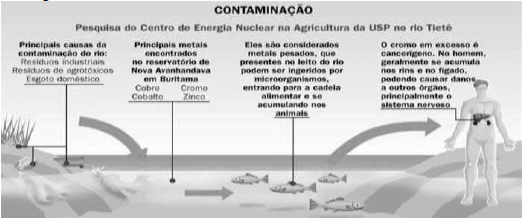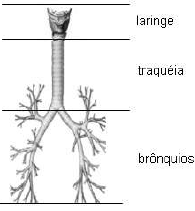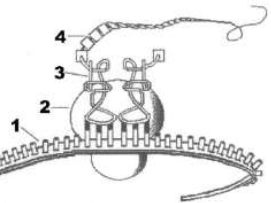Questões Militares
Para fumarc
Foram encontradas 217 questões
Resolva questões gratuitamente!
Junte-se a mais de 4 milhões de concurseiros!
Três alunos, Paulo, Joana e Rafael, discutiam sobre o experimento de Rutherford e fizeram as seguintes afirmações:
Paulo: Rutherford percebeu que a carga positiva do átomo não poderia estar espalhada por todo o átomo, mas sim concentrada num local muito menor que o próprio átomo. Joana: O experimento permitiu a Rutherford a descoberta do elétron, contrariando a ideia que havia na época de que o átomo fosse indivisível. Rafael: No experimento, Rutherford percebeu que os elétrons só poderiam se mover em determinadas órbitas em torno do núcleo, pois, nessas órbitas, os elétrons não emitiriam energia.Está(ão) CORRETA(S) apenas a(s) afirmação(ões) feita(s) por:
Numa residência, todos os aparelhos elétricos são ligados a uma mesma tensão elétrica. Sabemos que a resistência elétrica de um aparelho elétrico é inversamente proporcional à corrente que por ele passa. Nessa residência, estão ligados um chuveiro de 5.300 watts, uma lâmpada de 60 watts e um ferro elétrico de 1.000 watts.
Em relação a esses três aparelhos, é CORRETO afirmar que
Desde que começou a epidemia de AIDS, mais de 60 milhões de pessoas foram infectadas pelo Vírus da Imunodeficiência Humana - HIV, passando a ser a principal causa de mortalidade na África subsaariana, e a quarta causa em todo o mundo.Assim revelou o último boletim publicado pelo programa das Nações Unidas contra a AIDS, a ONUAIDS, em Genebra.
Relacionando o número de pessoas infectadas pelo HIV às formas de transmissão, a melhor explicação para esse número é dada por:
Observe o esquema a seguir:

Dos conceitos utilizados em Ecologia, aquele que explica o destino final do cromo é:
A galactosemia é um erro inato do metabolismo (de transmissão autossômica recessiva), caracterizado por uma inabilidade em converter galactose em glicose da maneira normal. O resultado imediato é o acúmulo de metabólitos da galactose no organismo, que passa a ter níveis circulantes elevados e tóxicos, principalmente para o fígado, o cérebro e os olhos. A lactose do leite é a principal fonte de galactose na dieta. A hidrólise da lactose resulta em glicose e galactose. O principal passo do metabolismo da galactose, em humanos, é a conversão de galactose em glicose. (Disponível em: http://galactosemia-biobio.blogspot.com.br/ Acesso em: 10/02/2013 - adaptado)
Considere o heredograma a seguir, para um caso familial de galactosemia, no qual todos os indivíduos ingerem leite.

A análise do caso familiar e outros conhecimentos sobre o assunto permitem afirmar que a probabilidade de a
criança, filha do casal II.1 X II.2, ser favorável à galactosemia é:
 Utilizando as informações fornecidas e outros conhecimentos que você possui sobre o assunto, está CORRETA a
afirmativa:
Utilizando as informações fornecidas e outros conhecimentos que você possui sobre o assunto, está CORRETA a
afirmativa: Considere o esquema a seguir de um importante processo biológico.

As informações fornecidas e outros conhecimentos sobre o assunto permitem afirmar que a única associação
CORRETA está na alternativa
A tiroxina é um hormônio produzido e armazenado na glândula tireóide. Tem como função regular a velocidade do metabolismo e a oxigenação dos tecidos. Sua produção se dá na presença de iodo e datirosina, sendo armazenados na forma de proteína.
A fórmula química da tiroxina é

A função química orgânica que NÃO está presente nesse hormônio é
CH4(g) + 2 O2(g) ->CO2(g) + 2 H2O(g) ΔH = -802 kJ
Se utilizarmos 4 mol de CH4 e 4 mol de O2 para uma nova reação, a quantidade de calor liberada será de
Indicadores de pH são substâncias orgânicas de caráter fracamente ácido ou básico, que têm a propriedade de mudar de coloração com a variação do pH do meio. A faixa dentro da qual se processa a mudança de coloração de um indicador é conhecida como zona de transição.

A solução que se torna amarela com a adição desse indicador é a solução de